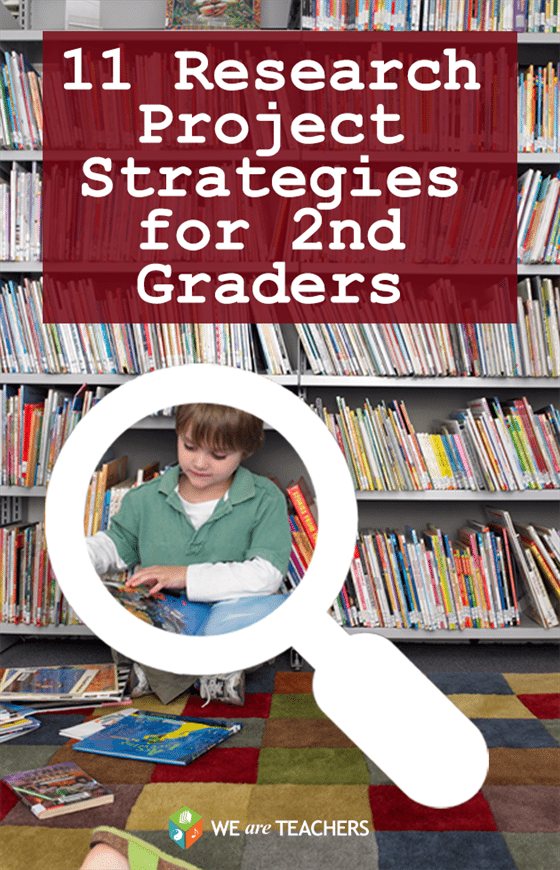Research is part of the Common Core standards for second grade, but what are some ways of approaching this seemingly complex topic with such little ones? Teacher Malia wrote into the WeAreTeachers HELPLINE last week asking for tips. “I have to do a research project with my second graders this year. Any tips on making research appropriate for that age?”
We got lots of feedback from teachers on creating grade-appropriate research projects, Malia. Try one (or all!) of these ideas for your next assignment!
1. Keep the topic simple.
Students can learn and apply methods of research on very simple topics. “My science and computer class did a short research project that entailed creating a PowerPoint about an animal they researched. It was not overly detailed.” —Stephanie W.
2. Use the project as a way to introduce students to the resources of the school.
“When I taught second grade, we did research projects. The kids had fun with it, learned how to use the internet and library as resources, and loved having a ‘big kid’ assignment.” —Elisabeth N.
3. Have a highly structured, creative final product instead of a written paragraph.
“I’ve done animal research in second grade. Their ‘paper’ was a very guided booklet with starters, prompts and stems. It worked really well.” —Jennifer G.
4. Or if you include writing, add a visual component to complement it.
“We do a planet project. They choose the planet and create a visual aid, write a paragraph, and present their findings to the students. The paragraph is a simple, four- or five-sentence piece with lots of support.” —Lorena I.
5. Get other staff members involved for support.
“I’ve always done research projects with my young students, and one thing that helps make it successful is involving other teachers in the school, like the computer teacher and the librarian. Having other people as resources to help out students creates more guidance and support for them.” —Katrina P.
6. Make it a habit.
Research can be a frequent part of your instruction. “My second graders do a research project every month! They create posters, Google slides and brochures. They are pretty good at it, and they love to do them.” —Sheli I.
The more often they do it, the easier it will be for them!
7. Break down the skills and teach them as mini-lessons.
“Teach the steps as individual lessons the culminate in a research paper or presentation.” —Hayley B.
“Give your students graphic organizers to help them keep organized.” —Helene E.
8. Do it all in the classroom.
Structure the project so it can be done completely in school. “My students need to learn the process, and it takes us a couple of months, and there is such pride in the finished product. It is all done in my room under my supervision.” This also cuts down on the likelihood that parents will “help” a bit more than they should.
“Do it in school to ensure the child does the work. If it’s done at home, then the child may still not have experience doing research because the parent could do the whole project or, on the flip side, not make sure the project gets done.” —Cathy C.
9. Create a flyer.
“My students do research and present it in a flyer format.” —Kathleen C.
10. Chunk it.
“My students in third grade have written several five- or more paragraph researched essays this year—typed! But we work in chunks for weeks and peer edit, and that’s what makes it work.” —Maggi S.
11. Go interdisciplinary.
“We did research projects on a chosen animal and everything tied in—they made clay animals in art, built their habitats, researched on the iPad and wrote a short essay about the animal. Then they presented their findings. They LOVED it!” —Alyssa V.
“We do a dinosaur research report and make clay dinosaurs. The students love to show off their dinosaurs and read their reports to us.” —Holly E.


